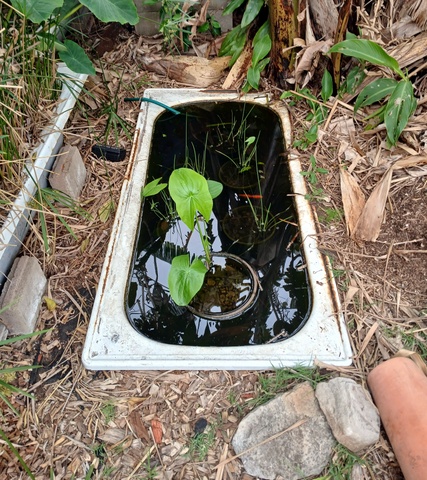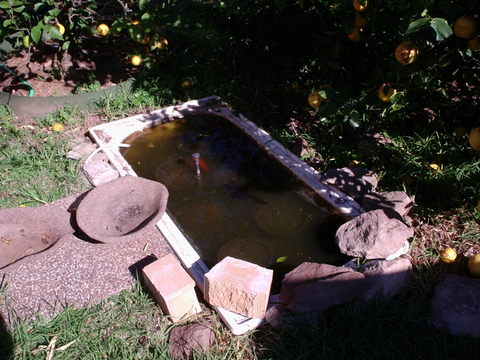Twenty years ago, I sunk a bathtub in the back yard, installed pots full of water chestnuts and broadleaf arrowhead (Sagittaria Latifolia) and christened it the ‘Productive Water Garden’, see photo above. Twelve months later and it was certainly a productive water garden see photo below. If you want the original story of when I put it in, that is available here.
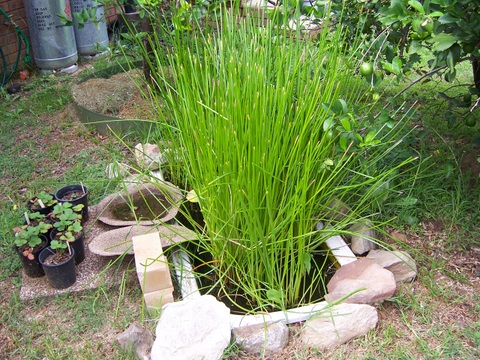
It functioned pretty much flawlessly since I put it in, and there have been lots of changes in the area where it was installed, but it still worked perfectly. Until it didn’t.
Over the last month or so I have noticed that when I fill it with water, or it rains and water levels rise, it only takes a couple of days for the water garden to empty again. This is contrary to how it has been operating all these many years. The inescapable conclusion was that there was a leak, most likely due to the bottom of the tub becoming a sieve due to rust.
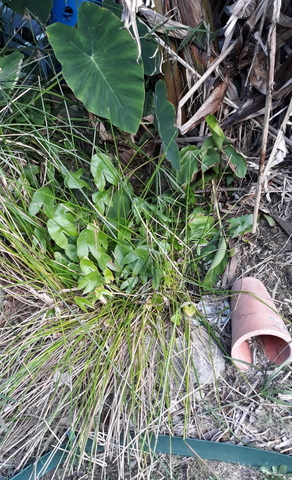
This is what the area looked like, prior to work commencing
While I wasn’t looking forward to it, I reasoned that the only response was to pull everything out and assess the damage. Perhaps using some silicone sealant to patch the holes or worst-case scenario, replace the entire bath.
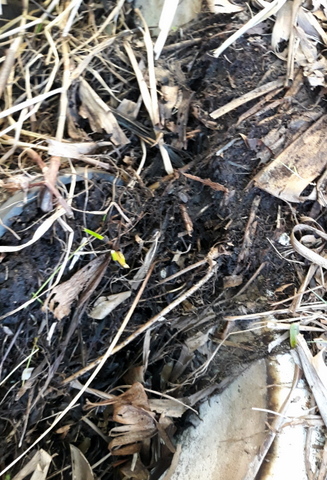
It is a little difficult to make out, but this was the sheaf of roots moving down into the bath!
As I removed the pots and started to dig out the accumulated organic material from the bath, I noticed some plant material sneaking down the side of the bath and onto the floor of the water garden. It appeared that the bananas which were installed next to the water garden had been sending down roots into it to harvest some of the water for their own use. From the mass of roots I took it that this had been happening for some time. Had it been a contributor to water loss?
I also wondered if the organic material had become acidic over time causing the bottom of the bath to rust out. I checked it using a pH test kit, but it came out what appeared to me to be 6.5 to 7.0, more or less neutral in other words, so that was not likely to be a contributing factor.
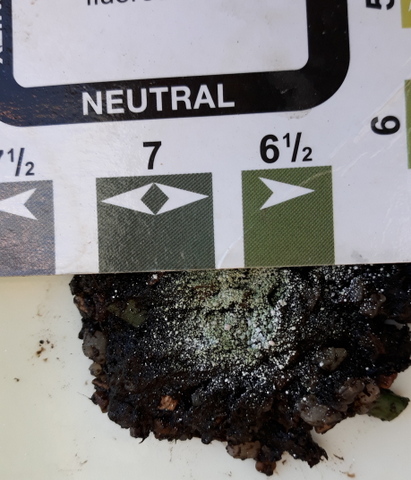
I continued to remove material from the bath, picking out escaped corms and stones from the top of the pots as I went. With most of the material removed I could now check the extent of the rust, but to my surprise I found no rust in the bottom of the bath at all. There was a bit around the edge of the bath, but none at all where it was under water.
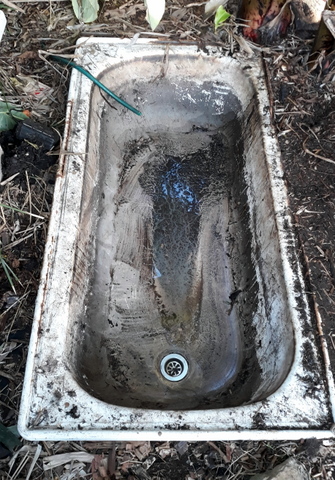
That left the plughole!
The plug was the last section of the bottom of the bath to be uncovered and when I looked at it, it appeared to be just about brand new. It was only after I lifted it out that I found underneath it a congregation of banana roots I mentioned earlier. They had snuck under the seal, breaking it and allowing a slow leak of water out of the water garden. So the bananas were in fact responsible for the water draining away, just not in the way that I expected!
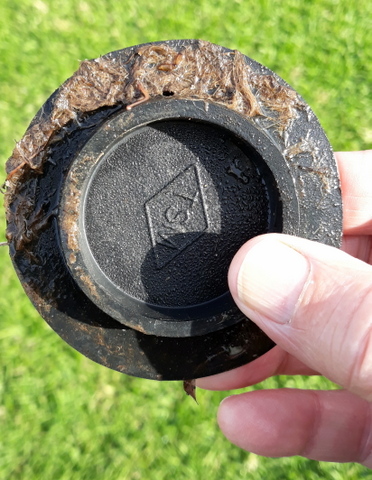
To fix the problem I removed the roots and wiped both the plug and the plughole over very carefully to remove any residue, then ran a bead of silicone sealant around the inside and pushed it firmly back into place. All that was required then was to put down a layer of the material I had extracted into the bottom of the bath, cover it with some new rocks, repack the pots and put them back into place. While we were at it, we also removed some of the detritus around the bath to give us better access.
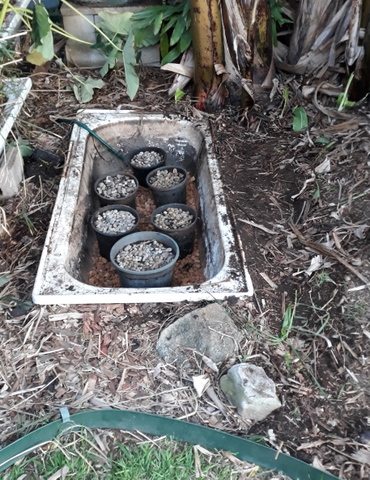
The water garden is topped up mostly by rain directed into it from one of the downpipes (for that set up, check here) and we were expecting rain the next day. As I write this the water garden is already half full and there is more rain on the way.
It just goes to show you that while having a theory is good, you have to do the investigation to find out what is really going on!
